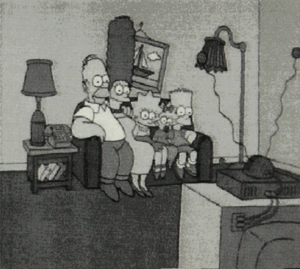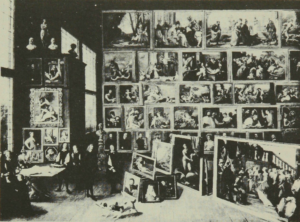Originally published in The Forum of Education
If either of you guys says “war” just once more, I’ll go in the house and shut the door. Pa talks war morning, noon and night ’till I could scream. There hasn’t been any fun at any party this spring because nobody talks anything else. Besides, there isn’t going to be any war.
—
I have done things for my country that will make your hair stand up. I killed, I burned villages, raped women. And why? Because they were Turks or Bulgars. That’s the rotten fool I was. Na! But now, I look at a man, any man, and say: “This one’s good, that one’s bad.” What do I care if he’s Greek or Turk? He’s good, he’s bad. And as I become older, I swear on the bread I eat, I even stop asking that. Good or bad, what’s the difference? They all end up the same way. Food for the worms. I’m sorry for the whole pitiful lot.
—
I don’t trust people who make bitter reflections about war… It’s always the generals with the bloodiest records who are the first to shout what hell it is. It’s always the war widows who lead the memorial day parades… We shall never end any wars by blaming them on ministers or generals or warmongering imperialists or all the other banal bogies. It’s the rest of us who build statues to those generals and name boulevards after those ministers… the rest of us who make heroes of our dead and shrines of our battlefields. We wear our widow’s weeds like nuns and perpetuate war by exalting its sacrifices… It may be ministers and generals who blunder us into wars… the least the rest of us can do is resist honouring the institution.
These are three different points of view about war from three different films – a romance about the Deep South, a raw slice of life from the Aegean Sea, and a war film. The characters are Scarlett O’Hara, Zorba and an American “dog-robber”. The films are Gone with the Wind, Zorba the Greek, and The Americanization of Emily.
Each of these characters is an image on a screen yet is as real and as vital as someone known intimately. They are alive and their words are vital because they are brought to us with the immediacy of the motion picture, movies, or what you will – the most popular pastime throughout the world. In the case of Gone with the Wind, they are especially significant words since they introduce what the last quarter of a century has proved to be probably the most popular film ever made at an international level. Rumour has it that every day this film is being shown somewhere. It is a natural assumption that Gone with the Wind has become part of the leisure experience of millions not only in the United States, England, and Australia but also in Europe and the Orient. It has become part of the folk-lore of more peoples than those who live in America.
This film and Zorba the Greek and The Americanization of Emily are illustrative of the fact that motion pictures have a widely extensive appeal that cuts across barriers of nationality, colour, and creed. Hong Kong citizens pay in their many thousands to see Alfred Hitchcock’s Psycho, and the latest production from Sweden’s Ingmar Bergman becomes the conversation piece of Australia’s self-styled connoisseurs. Robert Wise makes The Sound of Music for the masses to see and pay for, the Commonwealth Film Unit produces From the Tropics to the Snow to advertise Australia, and Michelangelo Antonioni makes intellectual movies for the intellectual market. In one evening it is estimated that hundreds of thousands of Melbourne residents see Imitation of Life on television.
Since the beginnings of the motion picture in the latter part of the nineteenth century, film has developed from a novelty, a technique to play with, to a status commensurate with, although not yet universally recognized as such, other art forms. This development has been characterized by two main trends – first, by its persistence as a novelty, exemplified by Cinerama and drive-ins; and, secondly, by its gradually being controlled and used by responsible film makers of three kinds. They are the business man seeking profits, the propagandist seeking converts, and the artist seeking to express a point of view about man and his society. Sometimes, and more often than not, all three work together.
Film, that is, has become not merely a medium for recording living realities and, through the deployment of special techniques, the recording of the fantastic, but also a means of representing reality and fantasy from a point of view. The film maker, be he the business man, the propagandist, or the artist, wishes to involve us for a multitude of reasons. But, when movies are being seen, in the cinema or on the television screen, are we seeing and hearing just what the business men, the propagandists, or the artists want us to see and believe and want, or are we aware that we are seeing and hearing what they wish, deciding for ourselves whether we shall accept it or not?
Is seeing a film or a television program merely a period of time in which one suspends critical judgement and allows oneself to be taken indiscriminately into various emotional states? Points of view? Beliefs and statements of value? Or, on the other hand, is seeing a film not merely a substitute for the first-hand experience of life but a potentially valuable experience in its own right, as significant, say, as reading a novel, visiting an art gallery, or attending the theatre?
The fact that movies may often be commensurate with the highest artistic expression in other media is not the point here. What is important is that film, more than any other medium of expression, is more readily available to take our money, influence our opinions, bring us into contact with or even commit us to another’s attitude, and, perhaps most seriously of all, consume our leisure time to the detriment of other activities.
Movie-going has been a popular pastime for more than sixty years. Even the onset of television has not drastically affected this factor since those who do view television are in fact watching film in the generic sense. If we refer more specifically to films as movies, then it is well known that people tend to watch television because it makes movies more easily available to them. Film, in effect, has become more than a publicly shared pleasure – it has become part of the fabric of home life. A casual pastime has developed into an educational problem.
Those who support the view that movies are a lesser art, offering manufactured day-dreams for star-worshipping fans, fail to see the incidentally or the purposively educative influences of the medium. Through identification with types or through the conscious acceptance of what is being seen and heard, individuals’ tastes, self concepts, and standards of living are being affected by that to which they are exposed on the screen. It is a truism that the movies imitate life less than life imitates the movies.
Everyday leisure experiences though they may be, the movies’ influences and educative and/or mis-educative repercussions in casual ways have two serious implications at least for educators.
First, we can profitably learn from filmic experiences. For instance, those who saw The Seven Faces of Dr. Lao – and there are few – can become aware of the insightful possibilities of this George Pal film. More than an amusement, decorated with the impossible by means of technical virtuosity and trick photography, this is an allegorical fantasy in which the mysterious Dr. Lao comes to a small town and places the mirror of truth before its inhabitants. This film represents the world in microcosm. How much we can learn of the self concept and its relationship to the self-made facts of life; how much of man’s devious path towards a successful orientation to life; how much, indeed, of the joys of existence. The young boy comes to Dr. Lao’s caravan after the circus performance. He begs Dr. Lao to take him with the circus on their journey as he wants to take part in its wonders. Dr. Lao and explains:
Mike, let me tell you something. The whole world is a circus, if you know how to look at it… The way the sun goes down when you’re tired and comes up when you want to be on the move… That’s the real magic. The way a leaf grows. The song of the birds. The way the desert looks at night with the moon embracing it… Oh, my boy, that’s … that’s circus enough for anyone … Every time you watch a rainbow, and feel wonder in your heart … every time you pick up a handful of dust and see not the dust but a mystery, a marvel, there in your hand … every time you stop and think “I’m alive, and being alive is fantastic.” … Every time such a thing happens, you’re part of the Circus of Dr. Lao.
The second implication is more tragic and supports the thesis that movies are a potentially harmful, mis-educative medium. This argument is inherent in the fact that not only can movies provide vicarious experiences but that these experiences become real per se. Watching a film is not merely an intellectual activity – it involves the senses and even fosters psychological change.
As indicated earlier, movie-going is a taken-for-granted part of people’s lives, especially their leisure time. The question for educators is clear: “Are we going to allow movie-going to remain at this casual yet serious level of experience, or are we to encourage the growth of an appreciative audience capable of regarding their movies with an open-minded, critical awareness of the medium and not just wallowing in the view that the cinema is a place of escape?” This choice is simply expressed and clearly stated in the Wyndham report and multifarious other educational documents. We are concerned with a significant aspect of one of the major aims of education – education for the creative use of leisure time.
Some educators will not admit the necessity of studying film along with other subject fields in the secondary and even the primary school curriculum. Vehemently they deny film appreciation and criticism parity of esteem with other academic disciplines in a core of recognizedly valued subjects. Those who have a little munificence in their academic composition will allow film to be taught or rather used to teach other subjects, especially literature, where the policy seems to be “Read the book, see the film, re-read the book, and keep the two apart.” Film thus becomes no more than a dubiously acceptable teaching aid. But, let’s face facts. W. C. Fields is not the Dickens’s Micawber even though Edna May Oliver’s Miss Trotwood is very close to being just that. Olivier’s Hamlet may be considered a travesty of its source in some quarters, depending on the point of view. Both are valuable only if considered in two ways – as an adaptation of David Copperfield or Hamlet and, more significantly, as films in their own right. Appreciation of each film can lead to new insight into the nature of the original work by comparison and contrast being exercised with reference to both media.
Education that is not related to living is unrealistic. One of the major tasks of education is to make the student aware that the so-called “academic” subjects are not matters strictly and solely associated with schoolrooms, books, and examinations. For each subject, therefore, the teacher has a two-fold purpose in his implementation – to foster intelligent interest in subject-matter and to exercise skills and habits that may carry over into life generally and make that life more functional and meaningful. English literature does not exist as a subject for study per se so much as it serves as a foundation for a more heightened appreciation of experiences attainable through literature as well as the enjoyment of the literature. It is a consideration such as this that prompts the teaching of film.
The urgent is that films and television be regarded as activities pertinent to and not necessarily contrary to the aims of education. If leisure time is consumed by these media, then what happens in that time becomes a province of the educator since his concern is not only with the pupil in school but with the pupil as a whole person for whom life goes on after school-hours. Especially is the educator concerned with enabling the pupil to transfer what he has learned in school to activities outside it. Transfer of learning skills and habits of critical awareness will not take place unless teaching is conducted for it to take place.
The aims of film teaching and the general aims of education are not mutually exclusive. They both seek to establish the fundamental knowledge of the subject-matter. More importantly, both represent attempts to provide ways of exercising rational and expressive capacities and ensuring an intelligent, continued interest in, and perhaps even enthusiasm for, the subject. Training in perception and the stimulation of imaginative powers through knowledge and association with the best can lead to the pupil’s development from emotional to considered response, from less identification with a character or player to a more serious, thoughtful identification or rejection of an idea or theme presented on the screen.
There is a tendency in some quarters to regard film as a kind of “visual literature”, with the attendant implication that appreciation of films is similar to, and therefore requiring similar means of, the appreciation of literature. True, skills of discussion, written appreciation, and so forth are involved. What is peculiar to film appreciation is the complementary employment of both visual and auditory skills in the intellectually and aesthetically demanding nature of thorough film analysis – to see one image, hear associated and/or dissociated sounds, and relate the two elements meaningfully.
As with all the arts, there are many ways of film education – film clubs and societies, television programs, books about film, etc. – but an institution established to conduct formal instruction at grade levels is the best way of coping with film and the mass media as both a problematic factor in the environment of teacher and child and as a form of art to which a creative and evaluative attitude must be developed.
Film education conducted by informal means would be unlikely to reach those who are most in need of it, that is to say, those least discriminating cinema and television patrons. There is no doubt, too, that the school offers the best opportunities for the systematic study of any subject and especially film, which for reasons already elaborated, tends to be regarded with little seriousness and respect. Furthermore, if pursued in a school situation, film can be more readily related to the other subjects in the curriculum. In this way film can be studied in its own right as well as acting as a catalyst in furthering the aims of education from a more general view-point.
This raises the issue whether film should be studied independently with a specialist teacher or integrated with other subjects in the curriculum, most probably and profitably English. It seems clear that it is only when a subject is established in its own right with a specialist teacher that it receives the recognition it deserves and some measure of esteem in comparison with other subjects.
A recognition of the need suggests four major consequences. Firstly, the teacher must have an aim, a goal to pursue, whereby the study of film can be a valuable effort as well as being correlated with the aims of the level of education of which he is a part. the selection of aims must be made in the light of the problems to be faced in implement them. Secondly, the teacher must know not only why and to what end films and television are being studied but also how to achieve his aims. this necessitates teaching procedures suitable for different age levels and grades, and aims appropriate for each of these grades. Thirdly, there must be a graded course of study. This should include a statement of aims and topics, methods and, most important of all, films and television programs that can be used, how to obtain them, and when to show them. Finally, consideration must be had for the training of teachers capable of undertaking such work in the schools. Before the teacher can teach films, he must be taught film as an art and in its context as an art-industry.
Essentially, both teachers and pupils must attempt to develop discrimination for, not against, films and television. Not all books are academic treatises: many are escapist. So, not all movies are ephemeral amusement. In one scene of Zorba the Greek, Zorba speaks with his friend, the writer, and says:
“It’s unfair. Everything in the world is unfair! I’ll never sign. Why do the young die? Why does anybody die? Tell me!”
“I don’t know.”
“Then what’s the use of all your books? If they don’t tell you that, what do they tell you?”
“They tell me … about the agony of men who can’t answer questions like yours.”
Movies tell us about the agony of men who ask questions by exploring all avenues of human experience. They can also tell us about the joys and the wonders of human experience. Movies are not just a part of life – they can provide us with some of our most educative experiences. It is up to teachers and educators at all levels to see that this can happen.
[from Film Appreciation Newsletter vol. 2, no. 1]





